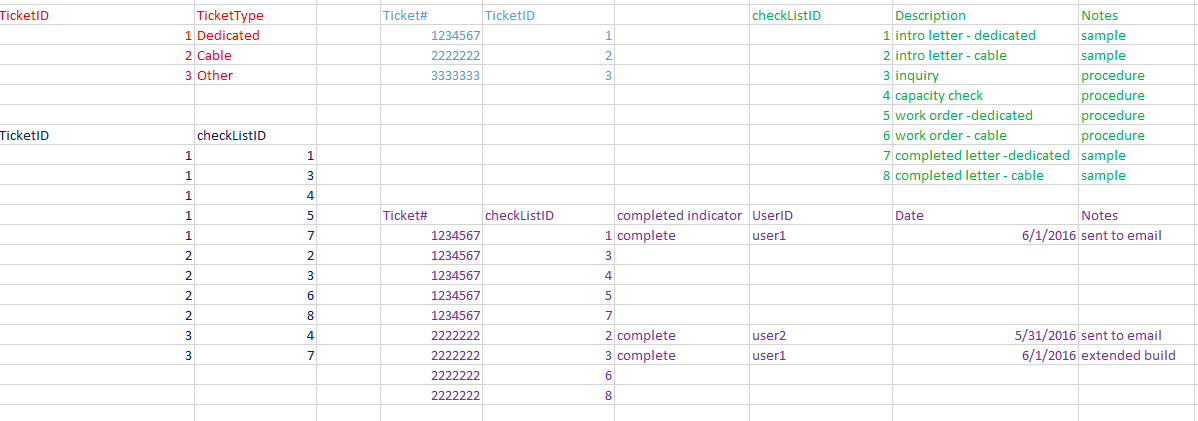Hey everyone, I have a question about a database design that I have right now. The template I was given from someone is the first attached that you will see. I looked at it and figured that the database design of that is not the best, so I decided to normalize it. I am stuck however when it comes to the whole Checklist ID and Ticket Number. The second picture is my design. Could someone help give me insight on a better design if there is one? I don't want to sacrifice speed for a slightly better design since the more normalized I make it, the more queries I'll have to do in the web application part of this.

TheFearful
radow 7 Junior Poster in Training
hielo 65 Veteran Poster

TheFearful
hielo 65 Veteran Poster

TheFearful
Be a part of the DaniWeb community
We're a friendly, industry-focused community of developers, IT pros, digital marketers, and technology enthusiasts meeting, networking, learning, and sharing knowledge.

